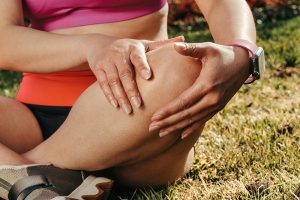
Free Shipping on $50+
Published on 11/25/2025
Let’s be honest—tight muscles are the runner’s version of a bad breakup. They show up uninvited, make everything hurt, and refuse to leave until you’ve paid proper attention. The good news? A massage stick is basically your muscle whisperer, and it’s way cheaper than physical therapy.
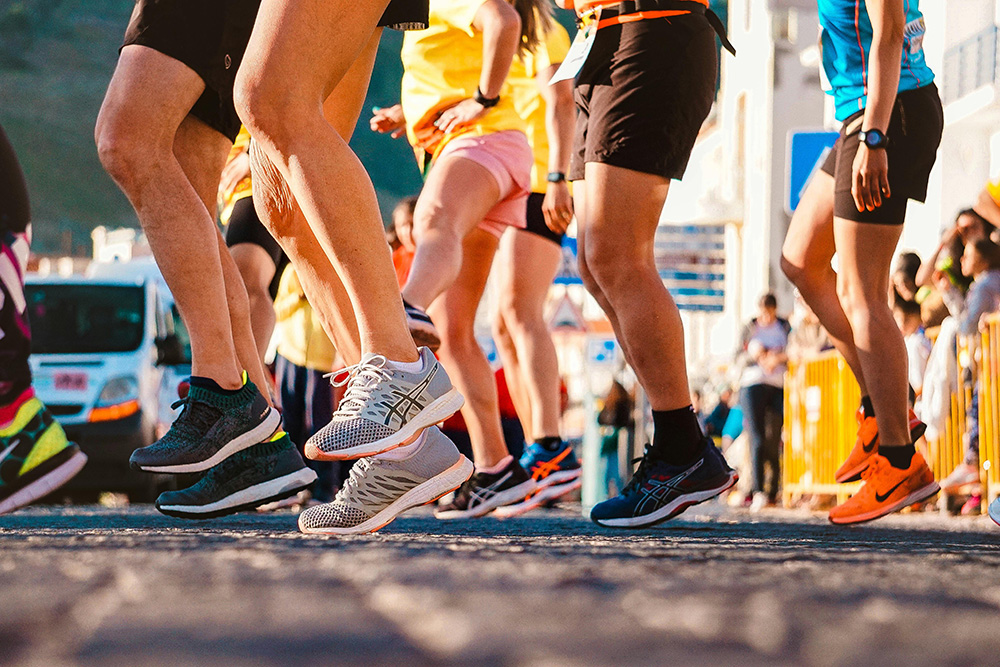
Before we talk solutions, let’s understand why your legs rebel after a long run.
The Impact Game: Every time your foot hits the pavement, your body absorbs forces up to three times your weight. Multiply that by thousands of foot strikes, and your muscles are basically tiny shock absorbers working overtime. They respond by tightening up—think of it as their way of saying “hey, I need a break.” (Patel, 2018)
The Dehydration and Waste Combo: Running is basically a metabolic party happening inside your muscles, and like any good party, it leaves a mess. When you’re dehydrated and lactic acid builds up, your muscles lose their elasticity faster than a rubber band left in the sun. They become stiff, cranky, and generally unpleasant. (The Doctors of Physical Therapy, 2022)
Muscle Imbalances: The Weak Link: Your glutes might be slacking while your hip flexors are working triple shifts. Your calves are overcompensating while your shins are underperforming. It’s like a dysfunctional band where everyone’s playing a different song, and the result? Certain muscles get chronically tight while others get tired and weak.
The Recovery Neglect Factor: Skipping warm-ups and cool-downs is like going to bed without brushing your teeth—sure, you might get away with it once, but do it consistently and you’ll pay the price. Without proper recovery rituals, tension piles up like unfolded laundry.
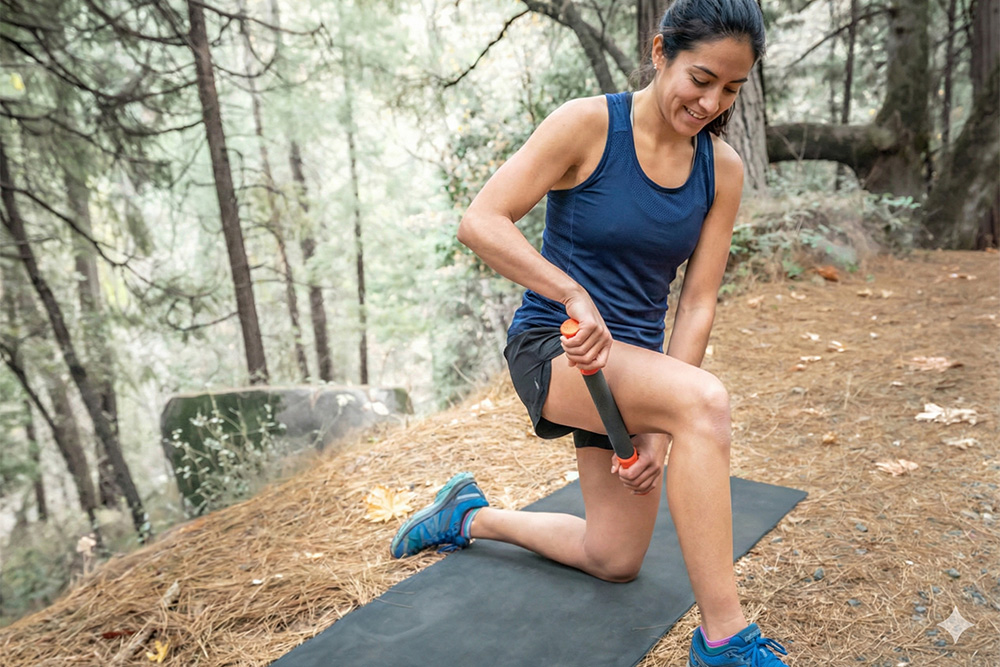
Foam rollers are great, but they’re basically the hammer of recovery tools—heavy, bulky, and you need your body weight to make them work. A massage stick? That’s your surgical scalpel. You have complete control, you can adjust pressure on the fly, and you don’t need to contort yourself into uncomfortable positions.
Here’s the real kicker: portability. A massage stick fits in a gym bag. A foam roller fits in your car. Guess which one you’ll actually use on vacation or at work? Exactly.
The precision is also game-changing. That tight spot in your quad that’s driving you nuts; you can zero in on it without rolling your entire leg. The targeted pressure creates a shearing effect through your fascia that is way more effective than the blunt force of traditional rollers.
Here’s the magic: when you roll a massage stick over your muscles, you’re basically giving your tissues a forced blood bath. Fresh oxygen and nutrients flood in, while all that metabolic junk gets flushed out. Your muscles go from “I’m tired and angry” to “hey, I might actually recover from this.”
The science backs it up, too. Research shows that mechanical stimulation from massage can actually trigger your muscles to build more mitochondria—those little cellular powerhouses that do the heavy lifting during recovery. It’s like upgrading your muscles’ operating system. (Runner’s World, 2022)
For runners crushing high mileage? This is life-changing. Regular massage stick use can reduce delayed-onset muscle soreness (DOMS) by 30%, allowing you to perform your workouts without suffering for three days afterward.
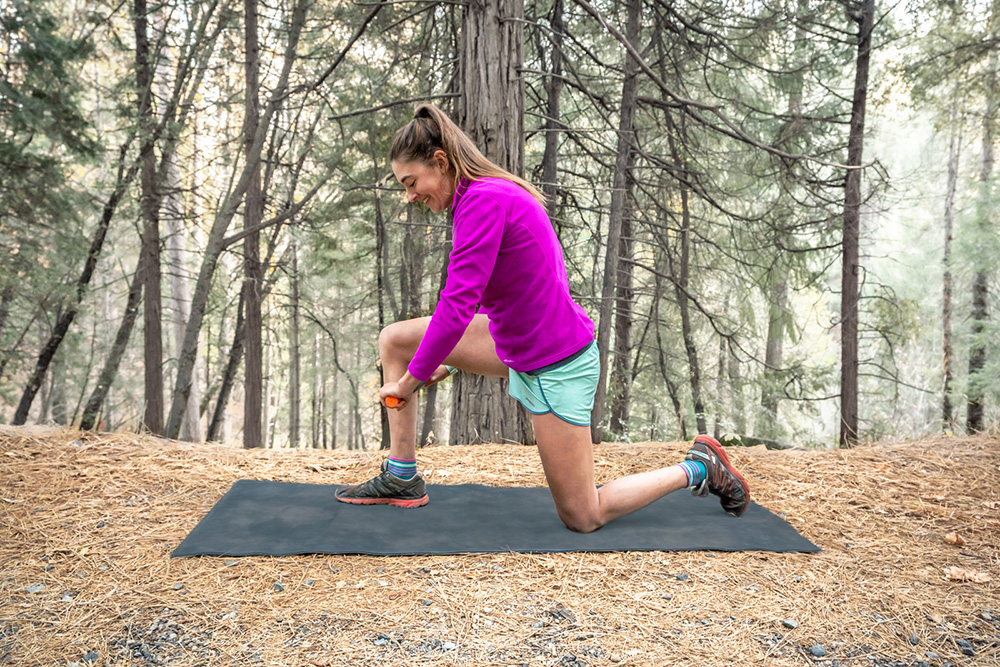
The IT band is the diva of lower-body anatomy—it’s tough, it’s dramatic, and when it acts up, it makes sure you know about it. Sharp lateral knee pain? That’s the IT band demanding attention.
Here’s the thing about IT bands: they can’t be “released” through stretching alone. They need direct mechanical manipulation, and that’s exactly what a runner roller stick provides. You can apply real pressure along the entire length of the band, breaking up the adhesions that create friction and inflammation.
But here’s the pro move: the IT band doesn’t work alone. It connects to your glutes, hips, and quads. By rolling the entire fascial chain—not just the symptomatic area—you’re preventing the compensation patterns that led to IT band problems in the first place. It’s treating the cause, not just the symptoms.
Pre-run: Five minutes of massage stick work wakes up your muscles, increases blood flow, and gets you ready for action. Think of it as a dynamic warm-up without the awkward stretching.
Post-run: Within 30 minutes of finishing, grab that stick and start rolling. This is when your muscles are still warm and receptive, and you can flush out metabolic waste before it settles into your tissue like an unwanted houseguest.
Recovery days: Less than ten minutes is all it takes to prevent chronic tension from building up. Consistency beats intensity every single time.
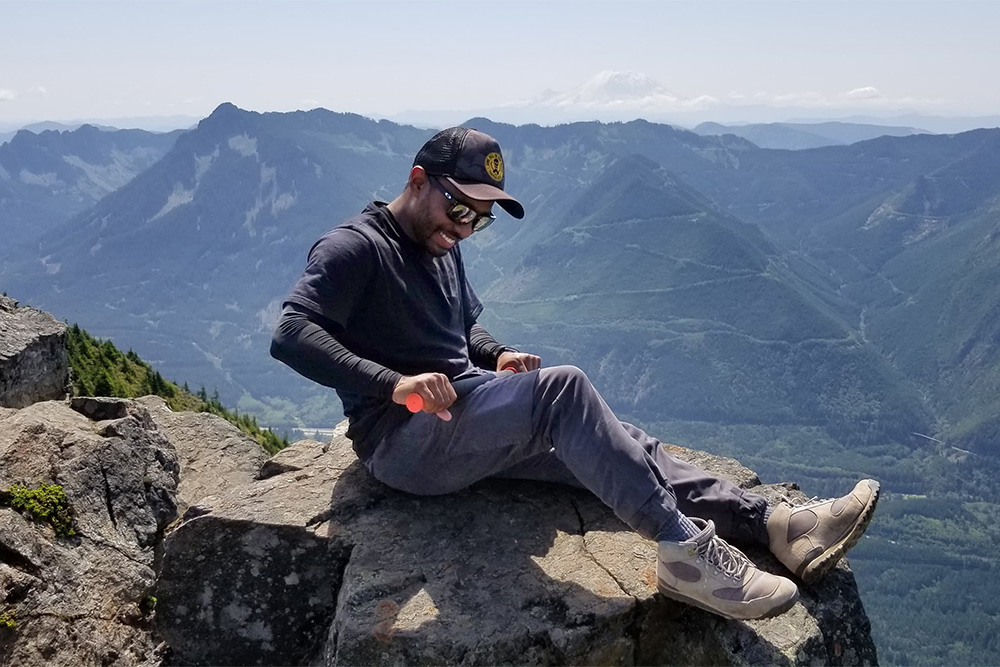
Quads: They’re massive workhorses that love attention. Rolling them improves knee tracking and prevents that patellofemoral pain that ruins training blocks.
Calves: These muscles manage crazy amounts of eccentric load and tension. A massage stick lets you target each part separately, addressing the imbalances that lead to Achilles issues and shin splints.
Tibialis Anterior (your shins): This underrated muscle prevents shin splints and foot control issues. Your foam roller basically ignores it, but your massage stick can zero in on it perfectly.
Hamstrings and Glutes: While foam rollers can handle these larger groups, a massage stick is perfect for finding those sneaky muscle knots that foam rollers miss. Plus, targeting your glute medius (that hip stabilizer) prevents the entire cascade of problems that leads to IT band issues.
Injuries rarely happen overnight. They’re usually the result of small compensations and imbalances that accumulate over time. A massage stick breaks that cycle in multiple ways.
First, by maintaining muscle elasticity, it ensures your muscles can absorb impact instead of transferring stress to joints and connective tissue. Second, is it an early warning system—that subtle tightness you notice while rolling? That’s your chance to prevent a real problem.
Third, regular rolling prevents one tight muscle from throwing off your entire kinetic chain. When everything is balanced and mobile, injuries lose their opportunity to develop.
And finally, the awareness you build while using a massage stick is invaluable. You start recognizing subtle changes in how your tissue feels, giving you the power to modify training before minor tightness becomes a major catastrophe.
Check out Tiger Tail’s assortment of roller sticks – Tiger Tail Rollers – you’ll find one with your name on it.

The massage stick isn’t flashy, it’s not complicated, it’s not expensive, and it won’t take up your entire recovery routine. But it’s genuinely one of the best investments for anyone serious about running without injury. Tight muscles? Prevented. IT band issues? Managed. Recovery speed? Improved dramatically.
Spend 10-15 minutes daily rolling those quads, calves, and that critical IT band. Your future self—the one who’s still hitting personal records without chronic pain—will thank you.
For more information on our awesome tools and programming:
Website: www.tigertailusa.com
Email: [email protected]
Disclaimer: This information is for general knowledge and informational purposes only and does not constitute medical advice. Consult a healthcare professional before starting any new exercise program.
Stay Up-to-Date!
Dr. Chirag Patel. (2018, January 7). Why do leg muscles tighten during running? https://www.drpatelchirag.com/blog/why-do-leg-muscles-tighten-during-running/
The Doctors Of Physical Therapy. (2022, September 14). Why muscles get tight. https://thedoctorsofpt.com/why-do-muscles-get-tight/
Runner’s World. (2022, June 16). The benefits of massages for runners. https://www.runnersworld.com/health-injuries/a20842798/the-pros-and-cons-of-massages-for-runners/

Spring Faussett is an American entrepreneur and inventor who founded Tiger Tail USA in 2006 with just $250, building the first 20,000 iconic orange and black massage sticks in her garage. A former Division I soccer player at Washington State University, her personal recovery journey inspired a passion for solving pain problems, resulting in over 15 patents in muscle recovery innovation. Faussett is an award-winning author of Happy Muscles®—Fast: a Self-Help Guide to Un-Knot Your Pain and holds a B.A. in Business and Communications from Washington State University, plus business certificates from Harvard and the University of Washington.